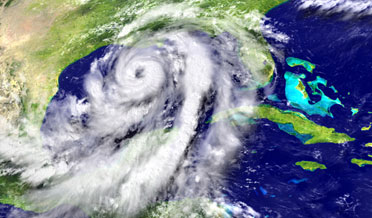HVAC Hurricane Preparation Tips for Homeowners
For veteran residents in Texas, severe weather events that are peculiar to the region, such as tornadoes or hurricanes, are old news. Tornado warnings signal a set of responses, and everyone is aware that June to November is hurricane season. However, Texas has experienced a wave of new arrivals, experiencing the hurricane season for the first time.
Hurricane preparedness plans abound from school schedules and evacuation routes, and in that spirit, we are helping with HVAC Hurricane Preparation plans for your HVAC system.
HVAC Hurricane Preparation Essentials
There are several things you need to know about hurricanes to help understand the potential problems.
- Storm intensity. All hurricanes are not alike. They start as tropical storms. The storm collects heat energy over the Atlantic Ocean, causing the storm to intensify. Atmospheric scientists classify hurricanes according to average wind speed; Category 1 storms have winds that range between 74 and 95 mph, Category 2 storms, between 96 and 110 mph, Category 3 storms, between 111 and 129, Category 4 storms, between 130 and 156 mph, and Category 5 storms have sustained winds above 156. Categories help residents prepare for these major storms; there is a big difference between 74 and 153 mph winds.
- Storm Damage. Coastal residents may experience flooding due to a storm surge—the storm’s intensity pushes water ahead of the storm. Expect the high winds and extreme rainfall to cause significant damage to structures and infrastructure.
Knowing what to expect from hurricanes, here are some HVAC Hurricane Preparation steps to prevent damage to your heating, ventilation, and air conditioning system.
HVAC Hurricane Preparation Tip 1: Protect the Condenser Unit
The condenser unit is found outdoors and, therefore, is vulnerable to heavy winds and blown debris. Do-it-yourself box stores sell air conditioner straps to tie condenser units down to prevent the unit from sailing away. Many homeowners prepare hard covers to surround the condenser, avoiding damage from debris. Make sure to remove any cover from the unit before turning the air conditioner back on.
HVAC Hurricane Preparation Tip 2: Pre-storm Cool Down.
Anticipate a period of several hours to several days without power. Drop the temperature setting on the thermostat about 5 degrees two hours before the storm arrives. The lower temp will increase the comfort level by cooling the entire house and furnishings, prolonging occupant comfort.
HVAC Hurricane Preparation Tip 3: Shut Off the Power.
When the power “flickers” on and off quickly, the flicker is accompanied by a surge in electricity, very damaging for every appliance and building system. As the wind and lightning threaten the power grid, flip the power supply breaker, separating the household circuits from the frequent surges. Your supply list for hurricane preparedness should include batteries, candles, and flashlights.
HVAC Hurricane Preparation Tip 4: Post-storm Start-Up.
After the wind dies down, take a quick inspection of the exterior of the home and specifically investigate the condenser unit. If the condenser is damaged in any way, keep the AC breaker off and call your HVAC professional. When you are sure power has been restored, flip the main breaker to restore power throughout the home.
Need help with your HVAC Hurricane Preparation? We Can Help!
Let Doctor Cool help with your HVAC Hurricane Preparation questions. Call Doctor Cool & Professor Heat today at 281-338-8751 or email Doctor Cool.
